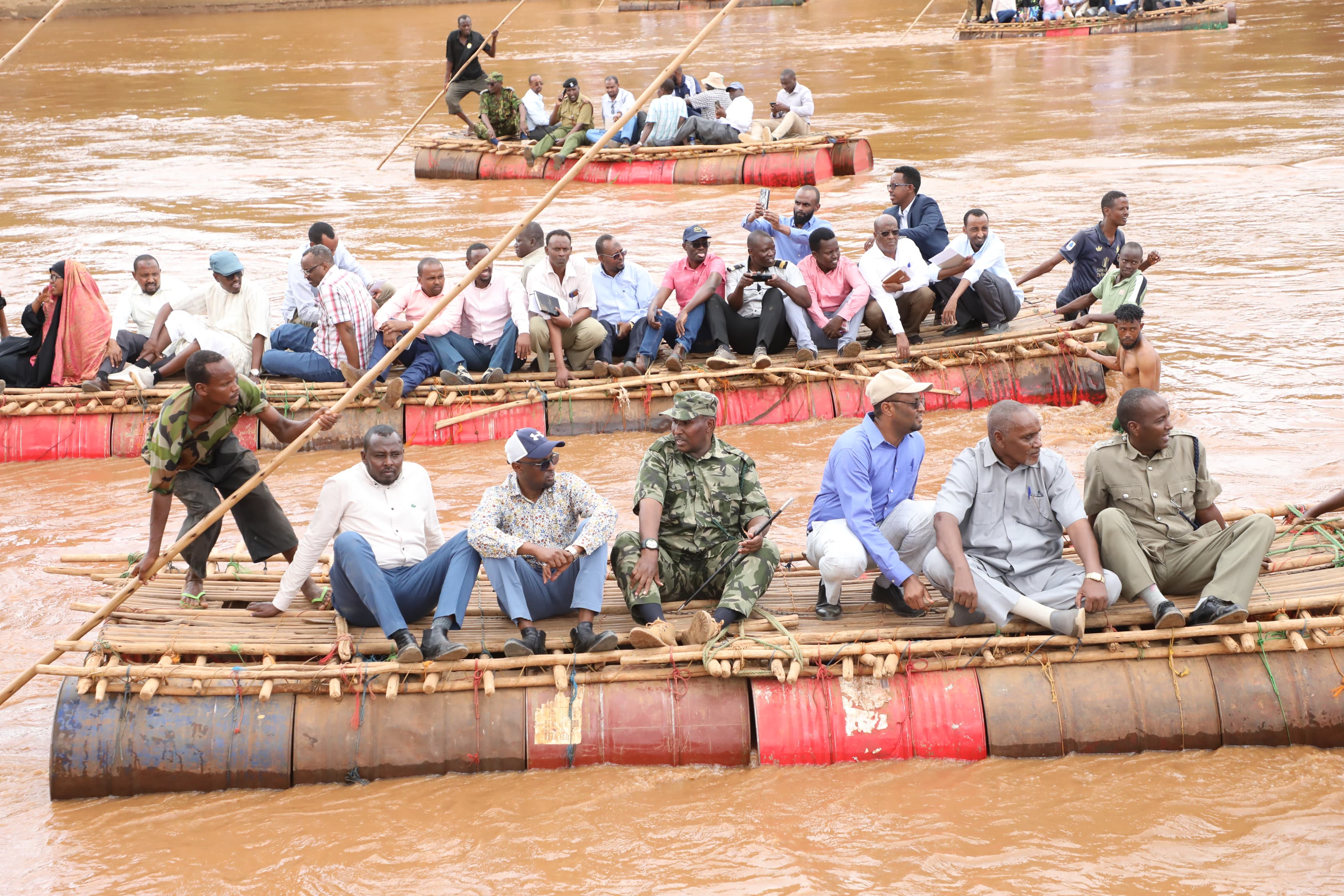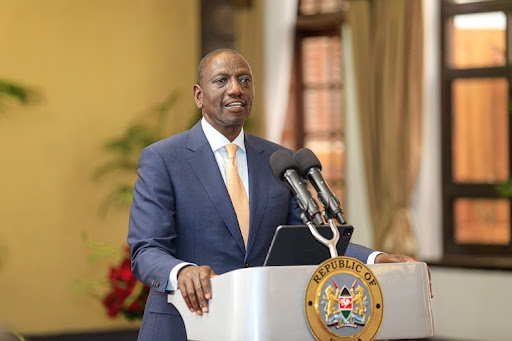
 Igad, Kenya and Ethiopia Federal Government Delegation and Mandera County Government Officials cross the Kenya /Ethiopia Dawa River Crossing point using makeshif boats at Malka Suftu in Mandera Town. Dangerous crossing./HANDOUT
Igad, Kenya and Ethiopia Federal Government Delegation and Mandera County Government Officials cross the Kenya /Ethiopia Dawa River Crossing point using makeshif boats at Malka Suftu in Mandera Town. Dangerous crossing./HANDOUT
When the Federal Democratic Republic of Ethiopia and the Republic of Kenya convened in Addis Ababa on June 5, 2025, under the auspices of IGAD, a new chapter was written in the longstanding brotherhood between the two nations.
That chapter is now taking physical form—concrete, steel, asphalt, and shared ambition—through the construction of two international-standard bridges across the River Dawa at Rhamu and Mandera, under the Horn of Africa Gateway Development Project (HoAGDP) with a joint mission in Mandera from 30th June-4th July 2025.
This initiative, supported by the World Bank and spearheaded in Kenya by agencies like NEDI,Ministry of Transport and Infrastructure, KeNHA, KRA, and the ICT Authority, aims not only to enhance regional trade but also to bridge long-standing historical gaps in infrastructure, connectivity, and opportunity across the Kenya-Ethiopia frontier.
More Than a Bridge: A Pathway to Shared Prosperity
The Rhamu (Malka Ladeni) and Mandera (Malka Suftu) bridges are more than mere physical structures—they symbolise hope for a region historically marginalised and underserved.
Designed to carry both light and heavy vehicles over approximately 200-meter spans, these bridges will overcome decades of seasonal isolation caused by the volatile Dawa River.
They promise safe, all-weather access for traders, pastoralists, families, and government services alike.
Alongside these bridges, the One Stop Border Posts (OSBPs) and fiber optic installations will drastically cut travel and trade time, enabling efficient cross-border processes, improving digital infrastructure, and creating jobs in one of the most remote corners of East Africa.
Reconnecting Communities, Cultures, and Commerce
Mandera, and Suftu Rhamu, and Sathe (across the border in Ethiopia) are not just geographical neighbors; they are communities intertwined by kinship, language, trade, and history.
For centuries, these borderlands have functioned as socio-economic corridors rather than political boundaries.
The bridge projects respect and restore that reality.
The project's vision aligns with the aspirations of the African Continental Free Trade Area (AfCFTA)—to reduce trade barriers, stimulate local economies, and unlock regional value chains.
The Kenyan and Ethiopian governments’ shared commitment to finalising legal and technical frameworks post-mission will be critical in ensuring seamless operations once construction begins.
Design with Purpose: Engineering for a Region, Not Just a River
The County Government of Mandera Lands Departments used GiS based analysis on:
1.Water Service Elevation to Inform the Bridge height,
2.Flurvial Flood, Flood caused by the River, the extent will inform the Landing Point,
3.River Change Detection-Change of the River in Direction to take future changes into design consideration and finally public participation /Stakeholders engagement necessary to map out the Project affected person (PAPs)
The Suftu and Malka Ladeni Bridges, with its post-tensioned box girder concrete superstructure and high flood resilience, reflects state-of-the-art engineering tailored to Mandera’s unique terrain.
Designed with three 14-meter-high spans, flood mitigation culverts, and asphalt-finished approach roads, the project is built for longevity and utility.
Equally impressive is the traffic transition tunnel that shifts traffic from Kenya’s Right-hand system to Ethiopia’s Left-hand flow—an engineering nod to regional integration.
But even beyond its structural merits, bridge design is human-centered.
It considers high water levels, economic corridors, and even the historic grazing and trading patterns of local pastoralist communities.
Opportunities and Realities: Challenges on the Road Ahead
No transformative project comes without its share of obstacles.
Implementation hurdles such as interagency coordination, border security dynamics, community sensitisation, and financing fluctuations will need close attention.
Moreover, capacity gaps at the local government level and non-tariff barriers may challenge the long-term sustainability of trade facilitation goals.
However, the project benefits outweigh the challenges.
The anticipated economic gains, coupled with regional peace dividends, could reshape the narrative of the Kenya-Ethiopia-Somalia tri-border zone from one of fragility to resilience.
This project’s realization wouldn’t have been possible without the guiding hand of the Intergovernmental Authority on Development (IGAD), which convened, facilitated, and guided both governments toward consensus and collaboration.
Equally, HE Governor Mohamed Adan Khalif and the County Government of Mandera has remained a key player, championing the needs of its people and ensuring that cross-border infrastructure translates into local benefit.
Special Thanks to IGAD Executive Director, IGAD Head of Mission in Kenya and Ethiopia Dr Fatuma Adan and Amb Abibaw respectively and HE Governor Mohamed Adan Khalif the County Government of Mandera
Conclusion: The Real Bridge is Trust
As construction begins on the Rhamu and Mandera bridges, we must recognise that what we are truly building is not just infrastructure—but trust, stability, and shared future between Kenya and Ethiopia.
In this transformative moment, concrete meets cooperation, steel meets diplomacy, and engineering meets empathy.
May these bridges endure as monuments not just of modern development, but of ancient brotherhood rediscovered.
The writer is the County Executive Committee Member – Lands, Housing, Physical Planning and Urban Development, Mandera County
















